Yaxley, Suffolk (†St Edmundsbury & Ipswich), C.15
Doom
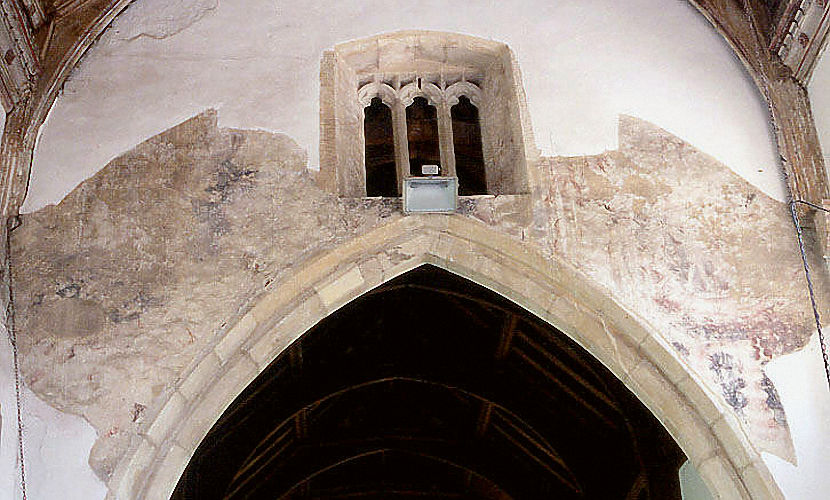
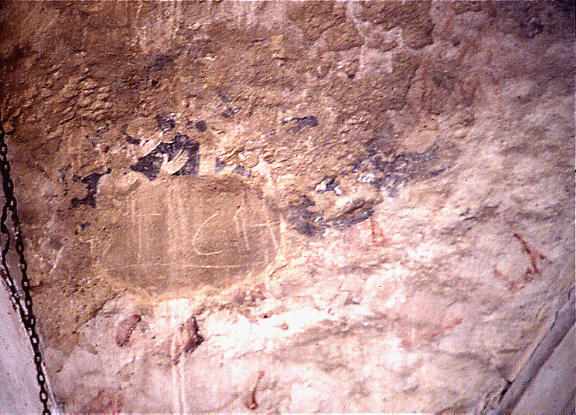
Although little seems to be left of this Doom, at close quarters several details, all of them intriguing, emerge. The Judging Christ and any figures around him have gone, and only a few small areas are clear on the left hand side. For example, on the left in the main picture, a small oval area of unpainted plaster is visible. Above and below this (the scratched initials are presumably from a 19th century restoration) are some fragments showing figures rising from their graves. Immediately above the raw plaster are the head and extended left hand of a man, with a suggestion of someone else’s hand behind. Below the plaster infill, another head, clearer this time and showing a distinct tonsure, has evidently come out of his tomb, the slab of which shows as a diagonal rectangle behind him. Part of a similar head is visible at the bottom centre of the photograph and there are areas of red pigment elsewhere which are probably the remains of other awakening figures.
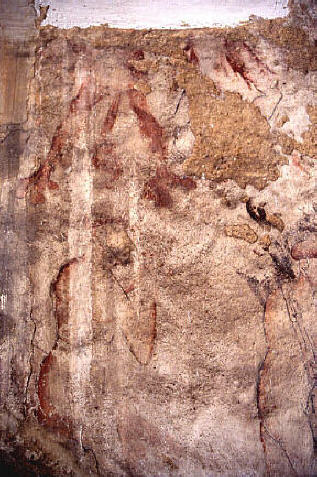
But the most interesting details in the Yaxley Doom are at the right, in what must once have been a terrifying vision of a damned soul’s arrival in Hell. Here, in the centre just below the square opening in the chancel arch wall, is the lower half of a hairy devil with splayed legs, clawed feet and, according to an old drawing in the church, something like an anchor slung around his waist and dangling between his legs. Some other confused details, probably of more devils, show at the right
Below these devils, a naked, tonsured man, perhaps with a beard, stands in an attitude of supplication, and partly visible at the right is another man, shown in full here below left, along with those welcoming him to Hell.
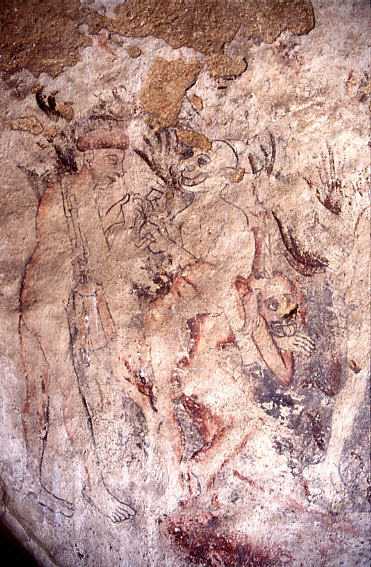
This very well painted man wrings his hands in entreaty of the grinning devil greeting him, but the most curious thing about him is the burden he carries around his shoulders – a long chain with a heavy-looking weight suspended from it.
The welcoming devil may hold the end of another chain. Stylised black flames spurt around the figures, and to the right of the principal devil is a crouching, grotesquely contorted figure with floppy dog-like ears, a similarly canine protruding tongue and, oddest of all, a spike apparently emerging from his head. Like the devil’s ‘anchor’ (another kind of weight) in the picture above right, this detail is confirmed by the old drawing of the Yaxley Doom, where several of the other devils then visible are shown with these spikes.
Events taking place beyond this are shown here at the right. In the centre, an upright devil, headless now, has more spikes, this time radiating from his back and shoulders like hell’s version of an aureole. He has claws for hands and feet, and, I think, at least one extra face on his shoulders/back, as is common in medieval devils (Wenhaston, also in Suffolk, and Broughton in Cambridgeshire are examples). As at nearby Bacton and at Chesterton in Cambridgeshire this devil is pushing a wheelbarrow, its handles quite clear, across which is slung another tonsured man, head resting on his crossed hands. There are more black flames immediately below, and if his mouth is open, as I think it is, then the reason why is obvious enough. The whitish area stretching below this and resembling a course of old brickwork is the toothed lower jaw of a Hell-mouth, the only detail of this now visible. Apart from a red devil’s leg ending in a cloven hoof, other pigmented areas and faint details are obscure now.
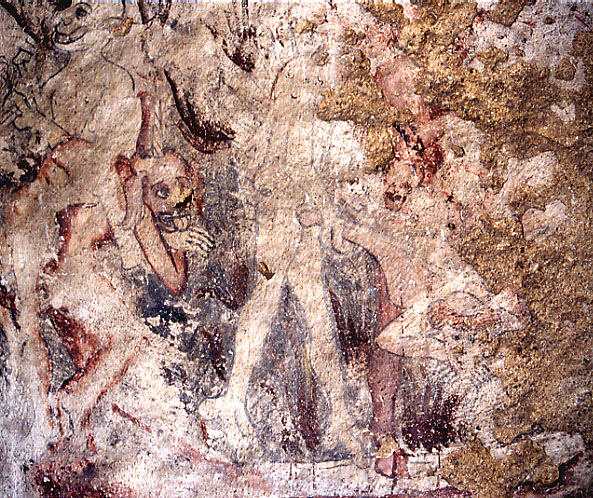
Finally at the left, the lower circles of Hell. This, at least is what seems to be implied by this descending spiral structure, but it is very hard to interpret, especially in a faint and rather blurred detail such as this. (I will try to replace this particular photograph, because this is not the first time a Suffolk Doom has made me think about the topography of Hell, and even about Dante’s influence).
The Yaxley Doom is currently being assessed with a view to conservation/restoration and active fund-raising is going on to pay for this. The church has many other medieval features, including a small 15th century stained glass panel showing St Catherine and a particularly fine south porch.